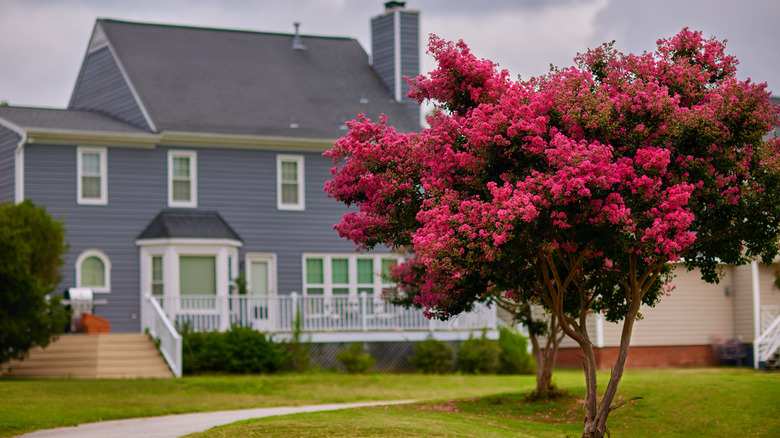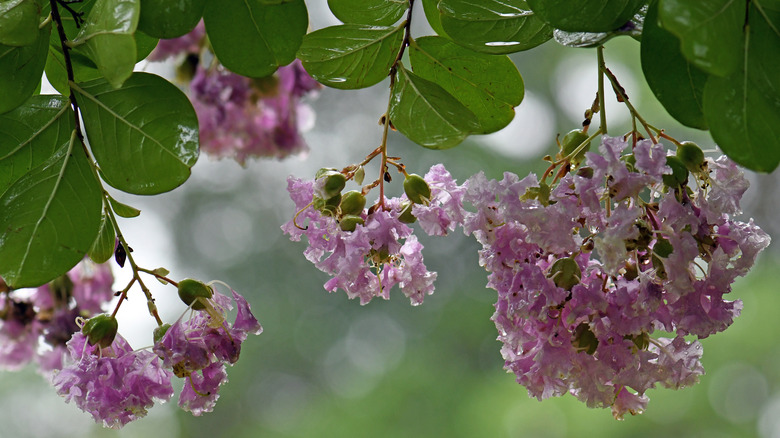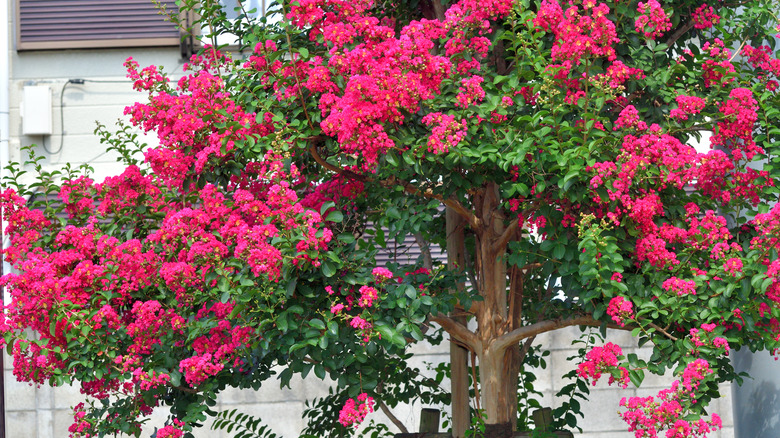Clear Signs You May Be Overwatering Your Crepe Myrtle Tree
Watering your plants is a task that may seem simple, but it can be surprisingly tricky to get it right. Too much water can be just as harmful as too little, and it is the leading cause of root rot. Finding that perfect balance takes practice, but it can be done with a little determination and learning to read signals from your plants. You can try these five ideas to make sure you never overwater your plants again. But there are certain species where watering correctly is vital to their health and overall beauty. The lovely crepe myrtle trees are one such example.
Unlike many other trees, crepe myrtles need to be watered on a regular basis, especially if the soil doesn't retain moisture. This is particularly important during dry periods when the temperatures are high and there is no rain. If your tree is overwatered, the leaves will start to turn yellow. This will be the first sign that trouble is brewing. When you overwater a tree, all the extra spaces in the soil get filled with water and cuts off oxygen from the roots. In essence, it suffocates the tree. If you're a gardening beginner, overwatering is one of the 12 mistakes you want to avoid but this is a common problem even among the experienced.
More signs your crepe myrtles are being overwatered
When a tree has been overwatered for an extended period of time the roots can rot. Lack of nutrition from the dying and dead roots cause the leaves to curl upward. This is an indication that the damage has progressed. However, it is possible to save your crepe myrtle tree if you act quickly. Just look for the yellowing leaves outside of the regular fall color changes. This discoloration will start before the leaf curling begins, so take it as a red flag that there is an issue.
You will know that your crepe myrtle tree is receiving too much water if the ground around it is spongy or you notice standing water. Both overwatering and standing water can be a cause for concern, resulting in the eventual death of the tree. If the area where the tree is planted is soggy, water-logged from rain, or standing water is present, relocate the tree to a drier location that drains well. If you decide to do this, make sure to transplant your crepe myrtle tree at the right time and avoid these mistakes for best results.
Proper watering techniques for your crepe myrtles
The best time to water your crepe myrtle tree is in the morning. Although crepe myrtles thrive in sunny conditions, the hot temperatures dry the soil out faster. By watering in the morning, this allows the roots to get the benefit of the hydration before the sun can dry up the area. But before you water your trees, check the top few inches of the soil. If it is slightly damp or dry, you can go ahead and water the tree. If it is wet, skip it.
Saturate the ground around the root of the tree, fully drenching the soil. You can even go a little farther out to encourage the roots to spread. Watering the soil around the tree and keeping the foliage as dry as possible helps to reduce the risk of diseases such as powdery mildew and mold. Be sure to check your trees often, especially during dry spells and water as needed. Don't worry about watering your crepe myrtle tree in the fall or winter as it goes dormant and can sustain itself.


